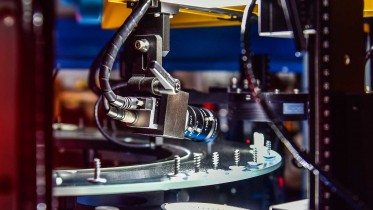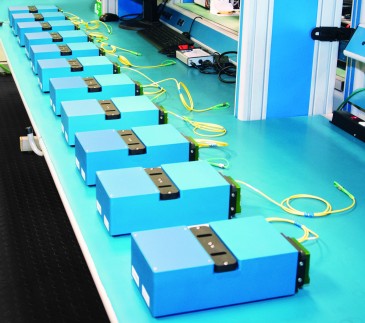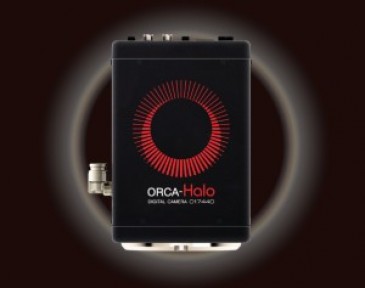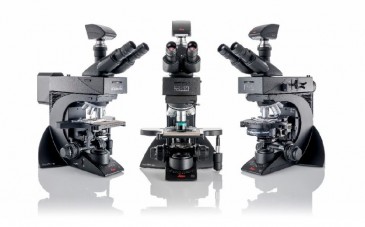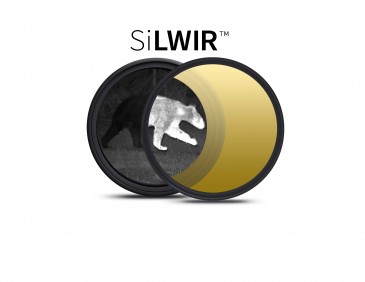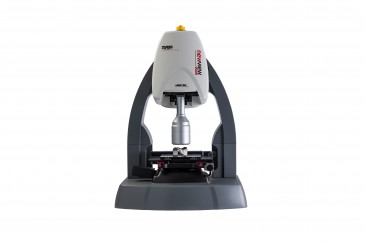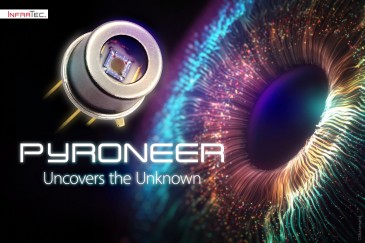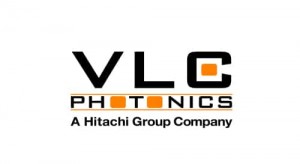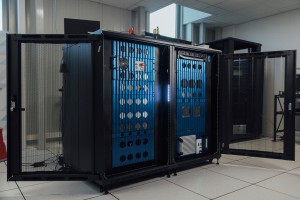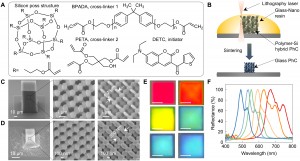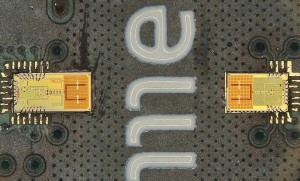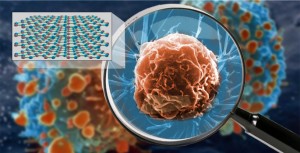
Researchers at Vanderbilt University in Nashville, Tennessee (US), have developed an optical lens powerful enough to image objects as small as 30 nanometers, based on the optical material hexagonal boron nitride (hBN), a natural crystal with hyperlensing properties (meaning it resolves objects much smaller than the wavelength of light). The team of researchers led by Joshua Caldwell, associate professor of mechanical engineering at Vanderbilt, has made a hBN crystal using isotopically purified boron, which improved its potential imaging capability by about a factor of ten.
The optical properties of natural boron degrade notably in the IR range because the crystal contains two isotopes that differ in weight by about 10%. Caldwell’s team has demonstrated that the inherent efficiency limitations of hyperlenses can be overcome through isotopic engineering, promising a path to the next generation of nanomaterials and -devices.
Past imaging devices with nanoscale resolution were incapable of imaging living organisms because they require high-vacuum conditions or lethal sample preparation techniques, or expose samples to harmful levels of radiation.
Hyperlenses carry the hope for highly detailed images of living cells in their natural environments. Furthermore, using infrared light can provide spectroscopic information about the objects, providing a means to ‘fingerprint’ the material, capabilities that could have significant impact on biological and medical science and enable applications in communications and nanoscale optical components.
Traditional imaging
“In traditional imaging, light that is scattered or reflected by an object is collected through a lens and focused onto a detector array,” Caldwell says, explaining that the smallest possible object that can be observed that way is governed by the diffraction limit, which is roughly the free-space wavelength one is imaging at divided by twice the index of refraction of the lens. “So if you consider for our work, we are working in the mid-wave infrared between about 6–7.5 um free-space wavelengths,” the professor says. “So with a material with typical indices of refraction of 1.5–3, you could image an object on the order of 1–2 um in size with traditional lensing approaches. Light scattered by smaller objects is evanescent, that is the scattered waves decay too quickly to be collected by the lens and imaged by the detector.”
How hyperlensing works
A hyperlens is made of a material that is hyperbolic — the real part of the dielectric function in one direction is negative (metallic-like) while the other is positive (dielectric-like).
Hexagonal boron nitride (hBN) is a natural hyperbolic material, material that can collect these evanescent waves with arbitrarily small wavelength (large wave vector) and propagate them through the material to the other side. “Previously, I collaborated with another group to demonstrate that a flat slab of hBN could be used to image deeply sub-diffractional objects (~100 nm diameter) with long wavelengths of light (up to 13.2 um) using the hyperbolic phonon polariton modes within hBN,” Caldwell says. However, he adds that this used a scanning near-field optical microscope to read out the signal on the other side, which he says was fine for proof of principle work but would certainly not be realistic for a practical lens. For a practical lens, the optical losses needed to be reduced further. “In this new paper, we were able to demonstrate that the losses in hBN could be reduced up to 14 fold, theoretically, with 3-4 fold reductions demonstrated experimentally by isotopic enrichment,” the expert says. “This allows us to support smaller wavelength modes at the same incident frequency of light, thus allowing higher spatial resolution imaging and the ability to propagate these smaller wavelength modes over longer distances in the hBN, which allows them to be collected on the other side.” He notes that in natural hBN without this enrichment, this is not possible since these small wavelength modes decay before they could propagate through the hBN. Thus, this materials improvement can provide improved spatial imaging resolution.
A realistic device for true imaging
“One problem that still exists is now how to make such a device realistic for true imaging, that is without the need of a SNOM to probe the transmitted signal,” Caldwell says, explaining that one way to do this is to curve the hyperlens material, much like a real lens. This is the approach originally advocated in hyperbolic metamaterials by Xiang Zhang’s group at the University of California, Berkeley, whose group originally demonstrated the hyperlens, according to Caldwell. This approach can magnify the transmitted signal with the intent of magnifying it enough so that the object can be imaged in the far-field with conventional optics. The professor explains that up until very recently, researchers were limited because they needed relatively thick — 100 nm or so — films of hBN for this to work. Using typical available crystals to exfoliate flakes, such thicker slabs were still relatively small in lateral dimensions — typically 50-200 um — and thus hardly realistic for even a proof-of-principle device. “Recent work by my collaborator on that Nature Materials paper, Jim Edgar at Kansas State, has now enabled not only these hBN crystals with drastically improved quality as we highlight but also much bigger size scales,” says Caldwell. “We are now exfoliating slabs that are approaching millimeters in scale and Jim is confident that he can drastically increase the size further to approach multiple millimeters in scale.
Beyond imaging
“One of the things I think is really cool about this specific approach is that beyond imaging, you could also use the incident infrared light to extract spectroscopic information by imaging on or off of vibrational resonances, for instance,” Caldwell says.
The research is detailed in the paper “Ultralow-loss polaritons in isotopically pure boron nitride,” published in the journal Nature Materials.
Written by Sandra Henderson, Research Editor, Novus Light Technologies Today





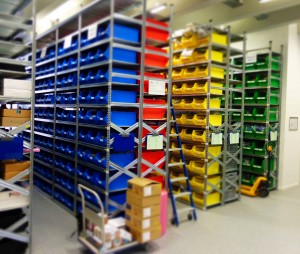


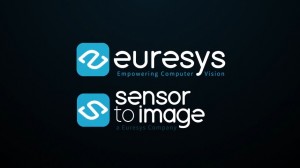
















 Back to Features
Back to Features
